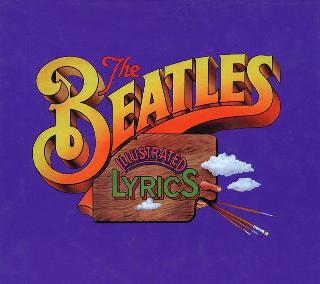Index
Home
Vorige
Day Tripper
Composer(s) : Lennon and McCartney
Year : 1965
Chords/Tabs: Day Tripper
Notes On "Day Tripper" (DT)
Copyright 1989 Alan W. Pollack
All Rights Reserved
"Day Tripper", by virtue of its handling of harmonic rhythm, the ostinato
bass part, and subtle textures in scoring, is remarkably instrumental,
even orchestral in gesture for a song. There are also several noteworthy
examples here of one of a composer's trade secrets; i.e., avoid rote
(read: foolish) consistency even when conveying homogeneity.
Some terms defined
"Harmonic rhythm" is the rhythm articulated by the chord changes in a piece
of music. It affects one's perception of the speed at which the music
moves forward more so than the actual tempo. For example, a piece with a
fast beat and many sixteenth notes in the foreground will still feel lumbering
if the chords change infrequently. The same is true in reverse. Furthermore,
harmonic rhythm can be manipulated to lend a passage a feeling of
acceleration and climax, or conversely, a feeling of relaxation.
"Ostinato" is the term applied to the repetition of a musical pattern several
times in succession. While such a pattern is often part of a bassline, it may
also appear as part of an upper melodic line; it may even manifest itself
as a chord progression or rhythmic pattern.
Ready for a run through ?
Formal Overview
The song has a somewhat compact form:
Intro | Verse | Verse | Bridge | Verse | Fadeout Coda
It is more typical of songs of this period to repeat the bridge/verse
one more time but, as we'll see later on, the nature of the bridge here
argues strongly against that.
Detailed Synopsis
INTRO
The song starts off with an unusually long intro consisting of no less than
five repetitions of an ostinato bass motif during which the instrumental
texture is continually thickened; first with just double-tracked guitar,
second with bass guitar added, third with rhythm guitar and tambourine added,
nothing changed in the fourth repeat, and finally those terrific drums and
cymbals coming in on the fifth repeat. The lack of change in the fourth
repeat is the first example here of an avoidance of foolish consistency.
Taking a cue from Paul's count-in, note that the tempo in one sense is quite
fast, but the static harmony and the outspread arch of the ostinato itself
(each repeat fills two complete 4/4 measures) are in stark contrast to the
underlying beat. The melodic shape of the ostinato and its syncopated rhythm
are worthy of their own discussion but I'd rather not digress here.
To sum up, we have ten full measures which consist harmonically of nothing
more than a prolongation of the E (I) chord. The effect is far from boring.
The thickening texture builds anticipation, plus, the verse commences
unexpectedly following an odd (actually prime) number of repetitions,
catching us by surprise. In comparison, four repeats would be simply too
four-square, and six or more would make it all too long; think the song
through in your head with these variations and notice the difference.
VERSE
The verse is a standard 16 measures alright, but the harmonic rhythm
and the progression of chords is unusual:
E - - -
E: I
A - E -
IV I
F# - - -
VofV
A G# C# B | E
IV VI V | I
c#: VI V I#3 VII |
The harmonic rhythm effectively mirrors the deferred gratification described
by the lyrics; after a ten measure introduction consisting of one chord, the
verse still has trouble getting off the dime, harmonically. The long sustained
chord of the first four bars is followed by only one change during the second
four. The third four hangs back again on a single chord. Finally, in the
fourth four we get a change of chord in each measure providing long awaited
kinetic relief.
The chord progression in the last eight measures also underscores the
lyrics' description of being teased and strung along. The choice of chord
for the third four is the V of V, a chord which badly wants resolution to the
V. Not only is this V of V prolonged per se, but it is not allowed to
resolve properly until all the way at the end of the following four measures;
and before doing so, we have an intervening flirtation toward the key
of the relative minor (appearing in Major mode, no less, which makes it
sound even more remote than it really is). Incidentally, when the ostinato
on E returns following the verse, it provides a pungent, albeit indirect,
cross relation with the E# of the C# chord two measures earlier.
Again, I don't want to digress here but some points worthy of further
study in this verse:
- the arpeggio quality of the ostinato continues in the bassline even
when the ostinato isn't present; another example of homongeneity without
foolish consistency.
- the ostinato which is flowing and arch-shaped stands in sharp contrast
to the voice parts which are jagged and downward in gesture. The melody
of the voice parts is very difficult to sing, particularly without
the underlying chords to keep you oriented; have you tried singing
this song in the shower lately ? I believe that this is one of two major
factors which create the overall instrumental flavor to the song.
- the different though complementary pinpoints of syncopation between the
bass and the voice parts are also noteworthy. An interesting exercise
would be to write out the composite rhythm of the two lines; if you
are unequipped to do so, try this -- concentrate hard in listening
and try to *hear* that composite rhythm.
- I'd argue that the two repetitions of the ostinato which separate the two
verses were intentionally put there to slow the pace of the game because
of whatever momentum is picked up in those last four measures of the
first verse. Imagine the song without them and see how the second verse
feels like the music is starting to hurtle.
BRIDGE
Right off, let's note that this "middle 8" is actually a size 12. Furthermore,
it's built on a prolongation of a single chord (B, the V chord); very
reminsicent of the transition from end-of-development-to-recapitulation
found in many classical and romantic symphonies. Melodically, we're treated
to the familiar ostinato followed by wordless harmonization in the vocal parts.
All this is very strange for the genre and the time period. I believe it
is this bridge which is the second major factor behind the instrumental
feel of the overall song.
The prolongation of a single chord serves a very different purpose here
from that of the introduction. No subtly rising expectations this time;
instead we have a powerful, total climax leading back to the final verse.
Rather than continue to slavishly reflect the lyrics, the music takes us
well beyond "half way there." (Sorry for the sophomoric vulgarity,
but you've got to remember that in its time, the lyrics of this song
were quite properly snickered over by many adolescents. Oy!)
Given all of this, it's fairly obvious that a second repeat of this
bridge within the same song would create an absurd anti-climax.
If you have any doubt about the climactic intention of the bridge, look at
one specific detail: the breathing/phrasing of the voices in the second six
of the bridge. These six measures are sung in three phrases of 3, 2, and 1
measures respectively; the breathing literally gets heavier.
Schematically:
voices: | |Ah----------|Ah------|Ah--|
instruments: |ost. |ost. |ost |lead guitar solo ---------|
| | |
measure #s: |1 2 3 4 5 6 |7 8 9 10 11 12 |
FINAL VERSE AND CODA
The final verse is virtually identical to the first two and architecturally
provides ballast and balance to the song overall. As seems to be a common
Beatle practice, the material for the coda is recycled from the intro. We
have the same five repeats of the ostinato with the same plan for thickening
the texture. The voices join in with a repeated pattern which carries us
through the fadeout.
Two last examples of foolish consistency avoided:
- the falsetto variation in the fourth phrase of the verse
- in the coda, the voices start in *on* the fifth repeat of the ostinato,
not after it.
... and one final example of an outright mistake the engineers tried
unsuccessfully to turn into a (second) gap:
- There are two or more singers in the coda. The pattern in the lyrics
is supposed to be "Day tripper, day tripper yeah!" but in the first
statement of this pattern one of the singers accidentally blurts
out "yeah" after the first "day tripper."
Oh well, "it took me so long to find out."
Regards,
Alan (awp@mirror.tmc.com)
---
"They tried to fob you off on this musical charlatan,
but *I* gave him the test." 062189#4
Ook op Yesterday and Today:
Ook op Past Masters, Vols. 2:
Ook op 1962-1966:
Ook op 1:
(c) 2024 Serge Girard


 (c) Alan Aldrigde, The Beatles Illustrated Lyrics
(c) Alan Aldrigde, The Beatles Illustrated Lyrics